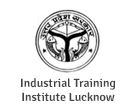OMR software, or optical mark recognition, has come a long way since it was invented in the 1960s. It was initially used for multiple-choice tests, surveys, and polls. With the advancement of its associated technology, it now encompasses many different applications and industries like healthcare, government, education, finance, and marketing.
Evolution of OMR Technology
Paper-Based OMR (1960s-1980s):
This is the inception of the technology. Back then, it was primarily used for multiple-choice tests and for questionnaires. The test takers back then would mark their answers on pre-designed and printed optical mark recognition sheets. This was done using a special pen or pencil. These forms were fed into an OMR scanner. This used a light source and photodetectors to detect the marks and then translate them to the machine.
Early Digital OMR (1980s-1990s):
With the evolution of computer hardware and technology, the OMR used shifted from primarily paper-based to digital. In the ’80s and the ’90s OMR software started to emerge. This allowed users to scan, create, and copy documents with mechanical ease. This also eliminated the need for pre-printed forms. The scans were faster, and more accurate data was collected.
Image Processing Techniques (1990s-2000s):
Image processing techniques were further improved, and along with that, OMR scanner software became more sophisticated. Developers also incorporated advanced algorithms to enhance the accuracy of mark detection. These will identify irregular or wrong marks and also ignore unnecessary information. This also allowed the technology to ignore wrong marks.
Automatic Forms Processing (2000s-Present):
The processing of automatic forms was introduced post-2000s. This enabled users to automatically extract data from unstructured forms. This also includes survey responses or medical records. This allowed many organizations to streamline data entry in a massive way by reducing manual labor and increasing efficiency.
Cloud Computing and Mobile Devices (Present Day):
Cloud computing allows connection ability across local machines. This has interacted with how the software interacts. Many OMR software now offer cloud features. This allows users to create and distribute the data online. This allows users to upload images of the sheets, and this can be processed in the cloud or at another local site. This makes it much easier to conduct remote assessments.
Artificial Intelligence and Machine Learning Integration (Emerging Trend):
Artificial intelligence (AI) and machine learning (ML) technologies are being integrated into OMR scanner software to improve mark recognition accuracy, automate grading, and provide real-time analytics. AI algorithms can learn and adapt to various writing styles so that there is accurate mark detection even when handwriting or drawing skills are very different.
Optical Mark Recognition (OMR) technology is used in various industries where data needs to be extracted from printed forms or documents. Here are some of the industries that commonly use OMR technology:
- Education: The most widely used is in education. OMR technology is tailor-made for the educational sector. It is used for grading multiple-choice, quizzes, and all sorts of exams. These institutions use OMR software to scan the answer sheets and then automatically evaluate student performance.
- Healthcare: Hospitals, clinics, and all sorts of healthcare centers will use OMR technology to extract all the data from medical records, patient surveys, and trial forms. This helps the professionals working in health care to very quickly and accurately process a large amount of data which will help with patient care as well as better outcomes.
- Government: The government has a myriad of uses for OMR scanner software. This technology can be used for voter registration, census surveys as well as tax data. This helps all government agencies to efficiently manage the large amount of data they collect and streamline all of their administrative tasks.
- Market Research: Almost all market research comprises user-filled forms to collect and analyze data from consumer surveys, product feedback, and customer satisfaction forms. This enables market research firms to process large datasets and then provide the right marketing strategy based on the data collected.
- Financial Services: Many financial institutions, such as companies, banks, and others, use OMR technology to process thousands of applications, claims, and other financial documents. This helps these organizations to automate data entry, reduce errors, and enhance their customer service based on data collected.
- Manufacturing: Counter-intuitively, the manufacturing industry also uses OMR technology to track all of its inventory. They also use it to monitor the supply chain and manage it. Quality control data is also gathered using OMR technology. This helps the manufacturing sector to optimize production, minimize waste, and ensure that all industry standards are met.
- Logistics and Transportation: These companies use OMR scanner software to track their packages, manage delivery routes, and monitor the performance of their drivers. The OMR tech really helps these businesses to streamline their operations and reduce costs as well as improve customer satisfaction.
- Non-profit Organizations: Many non-profit organizations use technology to manage donor management as well as manage people for fundraising campaigns and resource allocation, and also measure the impact of programs.
- Retail: Technology is ubiquitous in the retail sector. It is used again for inventory management, customer feedback, and sales tracking. The OMR helps retailers to identify the best product that sells, helps optimize strategies for pricing, and also enhances the shopping experience.
- Utilities: Utility providers use OMR technology for meter reading, billing, and customer management. OMR helps utilities to accurately measure consumption, reduce billing errors, and improve customer satisfaction.
The advancement of Optical Mark Recognition (OMR) technology has revolutionized data collection and processing over the past many decades. The technology that started out as a paper-based technology in the early sixties then evolved through various stages through the years, like the transformation to a digital format in the eighties and the addition of image processing techniques in the 1990s and the 2000s. The ability to automatically process forms also came about during the same time. Advanced features such as cloud computing have made accessing remote assignments easier, with institutions now being able to monitor assessments in real time. With growing trends in AI and machine learning integration, these capabilities have now become the industry standard enhancing mark recognition and providing features such as automatic grading, advanced statistics, and real-time analytics.
OMR software can process large volumes of data quite easily, which makes it indispensable for a variety of industries like healthcare, education, and finance. Additionally, the technology is flexible and can be customized to meet the needs of many businesses. Overall, investing in this technology leads to a large increase in productivity and accuracy in data collection and processing.






